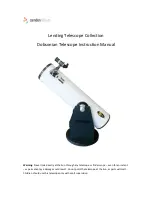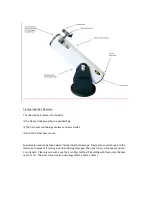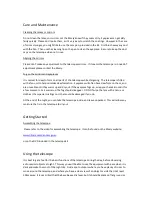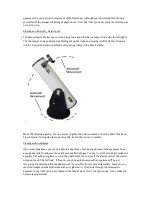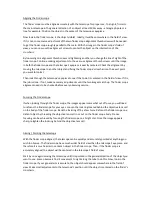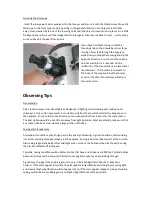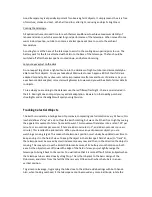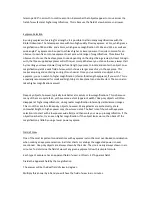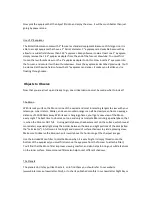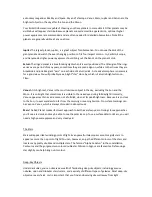
telescope 180° in azimuth to continue motion. Remember that objects appear to move across the
field of view faster at higher magnifications. This is because the field of view becomes narrower.
Eyepiece Selection
By using eyepieces of varying focal lengths, it is possible to attain many magnifications with the
Bintel Dobsonian. The telescopes come with two high-quality Plossl eyepieces: a 15m, which gives a
magnification of 80 and 83x, and a 9mm, which gives a magnification of 139x and 133x, as well as a
wide angle 2” eyepiece can be used to achieve higher or lower powers. It is quite common for an
observer to own five or more eyepieces to access a wide range of magnifications. This allows the
observer to choose the best eyepiece to use depending on the object being viewed. At least to begin
with, the three supplied eyepieces will suffice just nicely. Whatever you choose to view, always start
by inserting your lowest power (longest focal length) eyepiece to locate and center the object. Low
magnification yields a wide field of view, which shows a larger area of sky in the eyepiece. This
makes acquiring and centering an object much easier. Once you’ve centered an object in the
eyepiece, you can switch to higher magnification (shorter focal length eyepiece), if you wish. This is
especially recommended for small and bright objects, like planets and double stars. The moon also
takes higher magnifications as well.
Deep sky objects, however, typically look better at medium or low magnifications. This is because
many of them are quite faint, yet have some extent (apparent width). Deep-sky objects will often
disappear at higher magnifications, since greater magnification inherently yields dimmer images.
This is not the case for all deep-sky objects, however. Many galaxies are quite small, yet are
somewhat bright, so higher power may show more detail. The best rule of thumb with eyepiece
selection is to start with a low power, wide field, and then work your way up in magnification. If the
object looks better, try an even higher magnification. If the object looks worse, then back off the
magnification a little by using a lower power eyepiece.
Field of View
One of the most important considerations with eyepieces is also the most overlooked consideration
when making an eyepiece selection. In all star charts or catalogs the suggested power is never
mentioned. Deep-sky objects are always shown by their size. The size is nearly always shown in arc-
minutes. To determine the field of view of any given eyepiece follow this simple formula:
Each type of eyepiece has an apparent field of view i.e. (Plossl = 50° Apparent field)
Divide the Apparent field by the magnification.
The answer will be the Real field of view in degrees.
Multiply this answer by 60 and you will have the field of view in arc-minutes.

